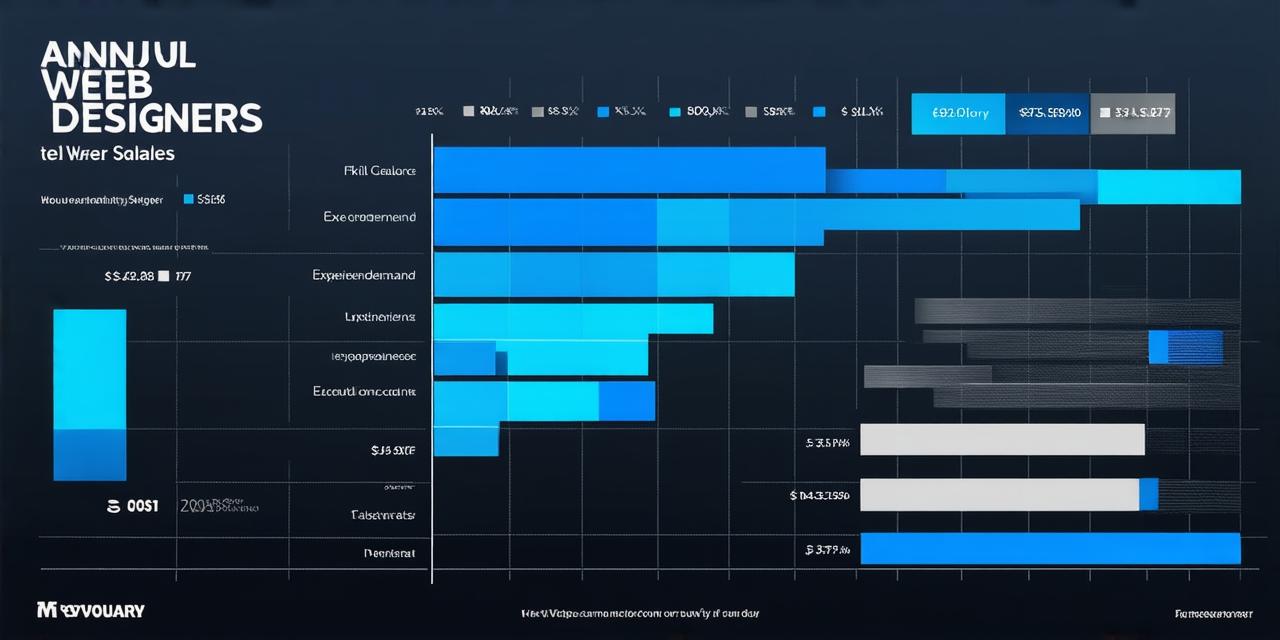Average annual salary of web designers
BlogEducation and Experience
Education and experience are crucial factors that determine a web designer’s salary. Web designers with a bachelor’s degree or higher in design, computer science, or a related field typically earn more than those with only a high school diploma. Additionally, web designers with several years of experience in the industry tend to command higher salaries.
Skillset and Specialization
Web designers who possess specialized skills, such as user experience (UX) design, interface design, or web development, can earn higher salaries. These professionals have a more significant impact on a website’s success, and their expertise is in high demand.
UX Design
UX design focuses on creating websites that are easy to use and navigate. UX designers work closely with clients to understand their needs and develop solutions that improve user experience. UX designers often use tools such as wireframes, prototypes, and usability testing to ensure that websites are intuitive and user-friendly.
Interface Design
Interface design is another specialized skillset that web designers can possess. Interface designers work on the visual elements of a website, including layout, typography, color schemes, and iconography. They use software such as Adobe XD or Sketch to create wireframes and prototypes for websites and mobile applications.
Web Development
Web development is a specialized skillset that focuses on building and maintaining websites using coding languages such as HTML, CSS, JavaScript, and PHP. Web developers work closely with designers to ensure that their designs are functional and visually appealing. They also work on optimizing website performance, improving security, and ensuring cross-browser compatibility.
Geographic Location
The geographic location of the web designer also affects their salary. Web designers living in urban areas tend to earn more than those living in rural or suburban areas. This is due to the higher cost of living and the greater demand for skilled professionals in major cities.
Industry Demand
The level of demand for web designers varies depending on the industry. For instance, web designers working in the technology sector, such as Silicon Valley, tend to earn more than those working in other industries like healthcare or finance.
Company Size
The size of the company also affects a web designer’s salary. Large companies tend to have more resources and budget for hiring and retaining skilled professionals, including web designers. Small companies may have limited resources and may not be able to compete with larger companies in terms of salaries.
Real-Life Examples
To better understand how web designers earn their living, let’s look at some real-life examples.
Mary – UX Designer
Mary is a UX designer who has been working in the field for five years. She has a bachelor’s degree in design and has completed several certification programs in UX design. Mary works for a large technology company in San Francisco and earns an annual salary of $120,000.
John – Web Developer
John is a web developer who has been working in the field for ten years. He has a bachelor’s degree in computer science and has completed several certification programs in web development. John works for a small startup in New York City and earns an annual salary of $85,000.
Conclusion
Web design is a highly competitive field with a growing demand for skilled professionals. The average annual salary of web designers varies depending on several factors, including education, experience, skillset, geographic location, industry demand, and company size. While the BLS’s median wage for web developers is approximately $114,520 per year, the average base salary for experienced web designers ranges from $90,000 to $120,000 per year, depending on various factors. As technology continues to advance and digital marketing becomes increasingly important, web designers will continue to play a crucial role in creating visually appealing websites that improve user experience and drive business growth.
